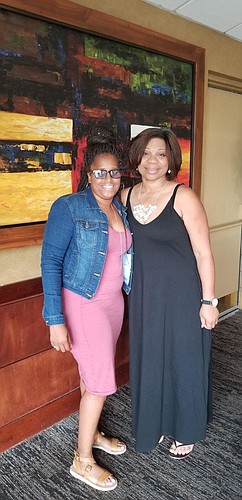- November 16, 2024
-
-
Loading

Loading

On Jan. 1, 2014, Mia Pompey woke up and asked herself, “What is my purpose?”
As a family support worker at the Sarasota YMCA’s Safe Children Coalition, she wondered, “I work in this, so why can’t I give back?”
Now, the Heritage Harbour resident is in her sixth year as a foster parent.
Kristen Kandel, recruitment specialist with the Safe Children Coalition, said about 1,500 children are being served by the coalition across Sarasota, Manatee and DeSoto counties. There were 96 children waiting in shelters or group care who need foster homes as of Feb. 5, and there’s a need for more foster parents, she said.
“There’s so many people who can make a difference,” Kandel said. “We really do have a need.”
Kandel also noted that of the children who are placed into a permanent home, 89% in Manatee County and 93.4% in Sarasota County do not re-enter foster care within 12 months of their placement.
Pompey, who has three children of her own, helps address the need. In her time as foster parent, she has fostered 12 children. She said her instructions were to treat them as her own.
“How could you not?” she asked.
Pompey and her best friend, Carlton Arms’ Desiree Brown, met when they worked at a youth shelter. They are now both therapeutic foster parents, with Brown being a foster parent for about two years. As therapeutic foster parents, they received additional training in the process, and they take in children who might have higher needs. That might include mental health or behavioral needs.
"Nobody wants the troubled kids. That’s all right. I’ll take them. I’ve been working with at-risk kids for 15 years."
— Desiree Brown, foster parent
“It’s a little bit more than the average foster parent would deal with,” Kandel said. “Some kids just have hard needs.”
Pompey and Brown, who are both family support workers for the Safe Children Coalition, were licensed through a subcontractor for the Safe Children Coalition, Camelot Community Care, to avoid a conflict of interest.
The decision to be licensed as a therapeutic foster parent was simple for Brown.
“Everybody wants the normal kids,” she said. “Nobody wants the troubled kids. That’s all right. I’ll take them. I’ve been working with at-risk kids for 15 years.”
Brown’s sentiment appears to be true. There’s a higher number of traditional foster home beds — the number of children that can be fostered — licensed by the Safe Children Coalition compared to the number of therapeutic foster home beds (318 to 45), according to the Florida Department of Children and Families. Statewide, the trend persists (9,916 to 928).
Both Brown and Pompey have had their share of crises during their time as foster parents.
One of Brown’s foster children, a 9-year-old boy, went through a phase where he threw a tantrum every time he didn’t get his way. He’d kick and scream and hit himself, but Brown was there to help.
“I would have to sit and hug him for one, two, three, four hours until he fell asleep,” she said.
Pompey’s foster kids had similar tantrums, but each expressed their emotions differently, and Pompey had to handle them differently. Some needed space, others she also had to sit and hold and get them to calm down out of their emotionally tense moment.
“You have to take a deep breath, first of all, and get them to calm down,” she said.
Brown echoed that, noting that she finds her motivation in seeing the change and growth in a child.
“If I’m going to help them, I’m going to go all out,” she said.
While the number of licensed foster homes in the Safe Children Coalition network is among the highest ever at 197 homes caring for 271 children as of November, there’s still a need for more foster parents, Kandel said.